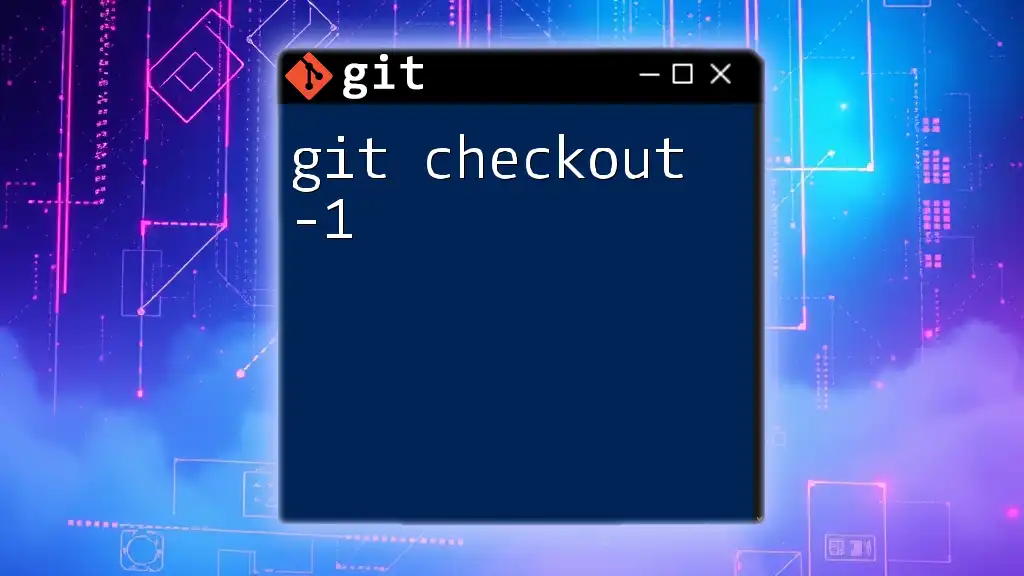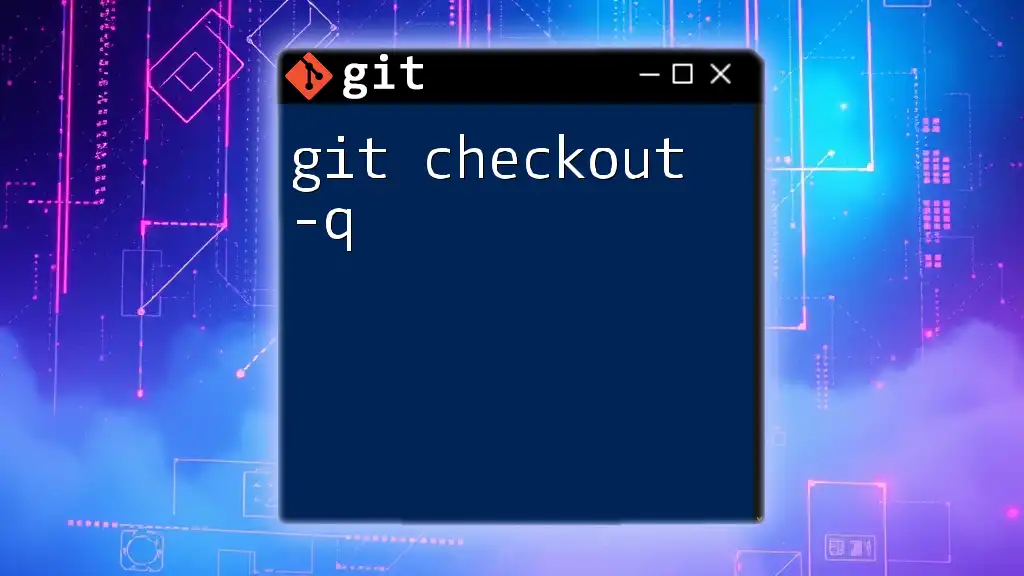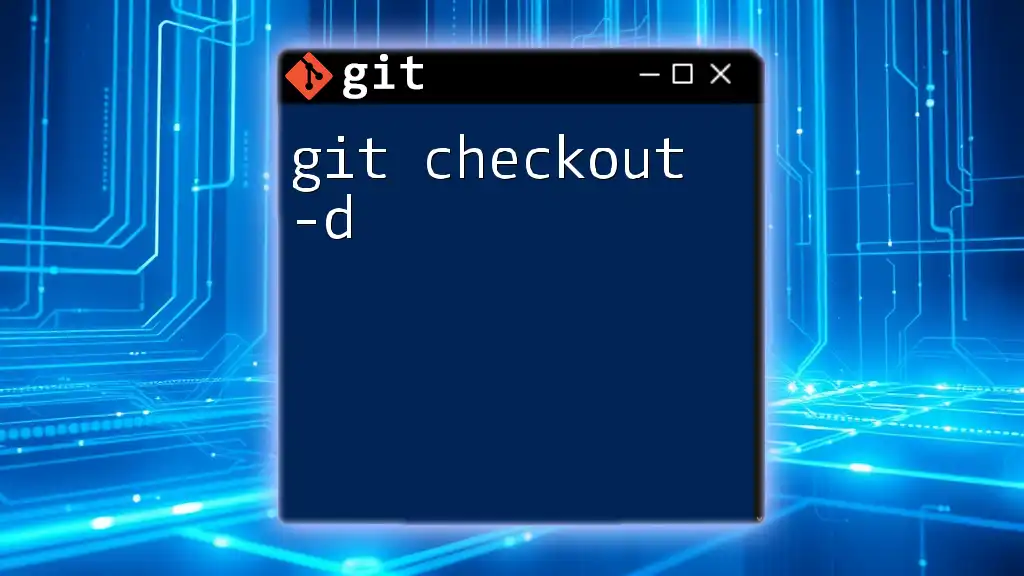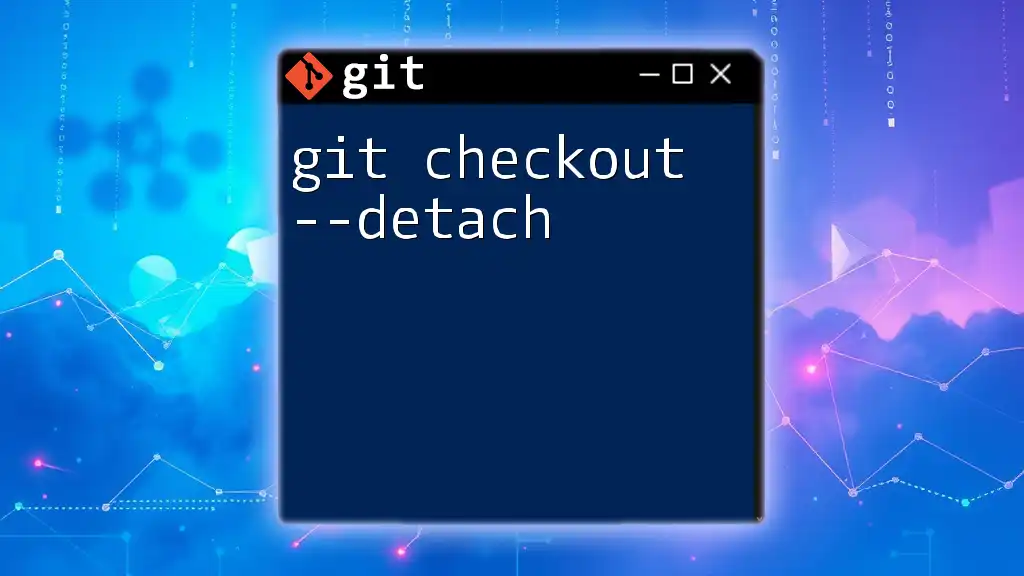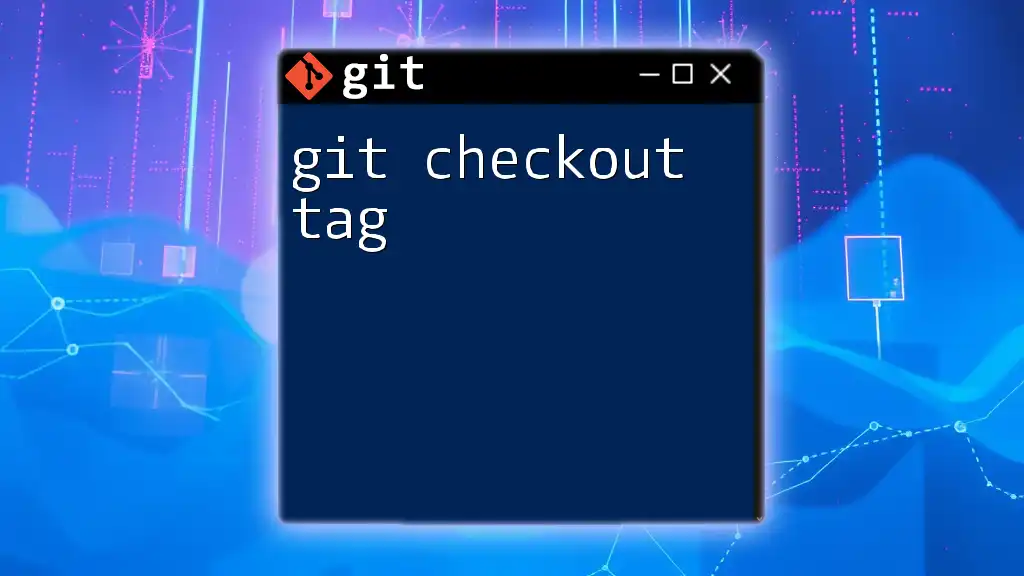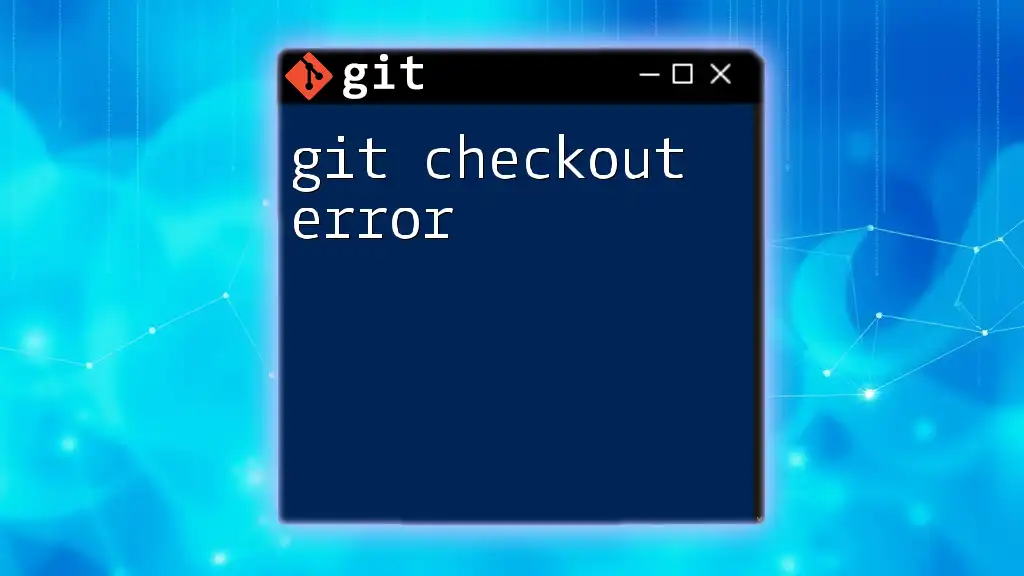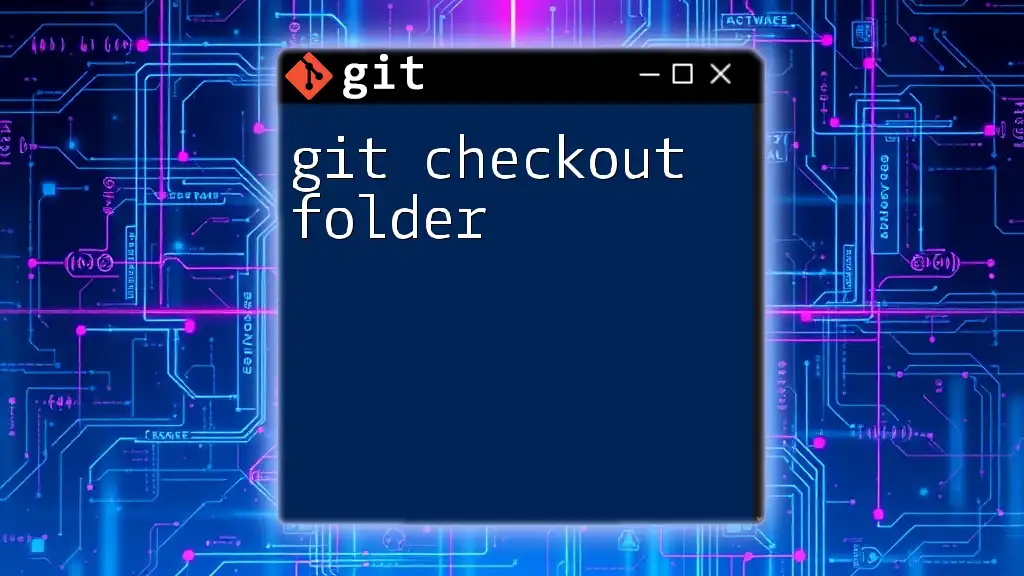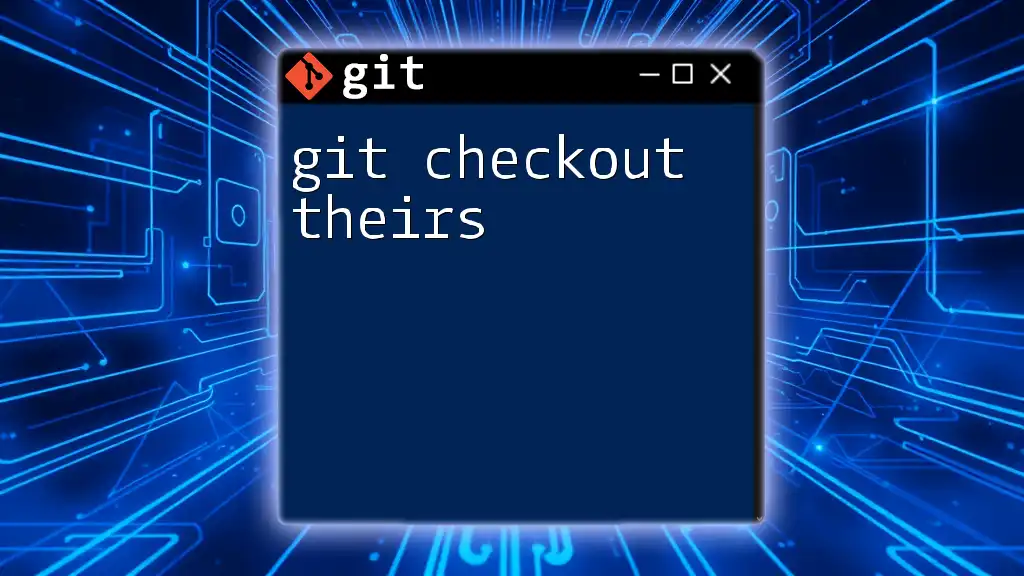The command `git checkout -1` is not valid; however, if you meant to switch to the previous branch you were on, the correct command is `git checkout -`, which allows for quick navigation between branches.
git checkout -
Understanding the Basics of `git checkout`
What is `git checkout`?
The `git checkout` command is a powerful tool in Git that allows you to navigate between different branches and commits in your repository. This command also enables users to create new branches, restore files to a previous state, or view project history. With its versatility, understanding `git checkout` is pivotal for effective version control.
Syntax of `git checkout`
The basic syntax for `git checkout` is:
git checkout <branch-name|commit-hash|-- <file>>
- `<branch-name>`: Specifies the branch you want to switch to.
- `<commit-hash>`: Refers to a specific commit you wish to view or revert to.
- `-- <file>`: Restores a file in your working directory to the state it was in at the last commit.
Key examples include: Switching branches with:
git checkout feature-branch
Restoring a file:
git checkout -- example.txt
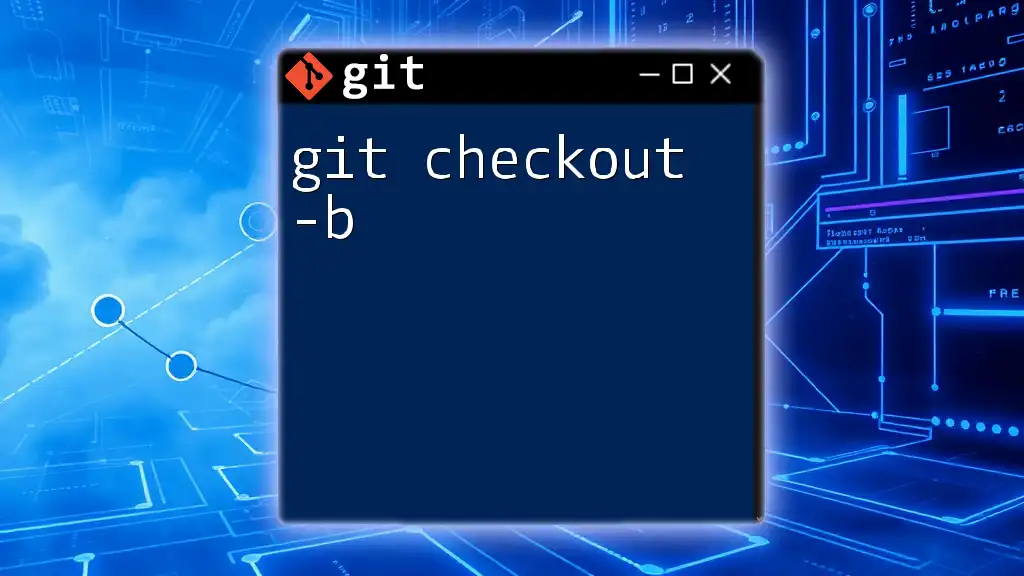
Diving into `git checkout -1`
What Does `git checkout -1` Mean?
The `git checkout -1` command serves as an abbreviation for returning to the last branch you were working on. Instead of typing out the complete branch name, this shorthand allows for a quicker and more efficient way to switch between branches, especially when frequently toggling back and forth.
Benefits of Using `-1`
Using `git checkout -1` simplifies your workflow in several ways:
- Efficiency: Quickly return to your last working branch without needing to remember its exact name.
- Focus: Helps maintain your attention on the task at hand by minimizing interruptions caused by manual branch navigation.
- Flexibility: Perfect for scenarios where you frequently switch contexts, such as fixing bugs on one branch whilst developing features on another.

How to Use `git checkout -1`
Step-by-Step Guide
Prerequisites
Before using `git checkout -1`, ensure you are in a Git repository where you have previously worked on multiple branches. This command is most effective if you have toggled between branches recently.
The Command in Action
Let’s say you were working on a branch called `feature-xyz` and needed to switch to another branch called `bugfix-123`. After making some edits in `bugfix-123`, if you want to go back to `feature-xyz`, instead of typing the entire branch name, you can simply run:
git checkout bugfix-123
git checkout -1
Visualizing Branch Changes
To keep track of your branch changes and confirm the active branch, you can use:
git log --oneline --graph --decorate
This command will give you a clear, visual representation of your branch history, helping you understand your current position in the repository.
Common Mistakes and Troubleshooting
When using `git checkout -1`, it’s crucial to understand what may go wrong:
- If you haven't switched from one branch to another before using `git checkout -1`, you will not have a previous branch to go back to, leading to confusion.
- Attempting to switch with uncommitted changes can disrupt your workflow. Before using the command, ensure your work is either committed or stashed to avoid any conflicts.

Best Practices for Using `git checkout -1`
Integrating with Your Git Workflow
Incorporating `git checkout -1` into your daily development routine can increase productivity. Adopt these practices:
- Develop a habit of regular commits: This ensures that you have clean states to return to when using `git checkout -1`.
- Use descriptive branch names: While `-1` allows for quick access, knowing your branch context enhances overall project clarity.
Case Studies
Many developers have found that utilizing `git checkout -1` significantly improves their efficiency. For example, a developer working on multiple hotfixes while maintaining a stable release branch could easily alternate between tasks without losing focus. Such practices have helped teams meet deadlines and maintain robust code quality.
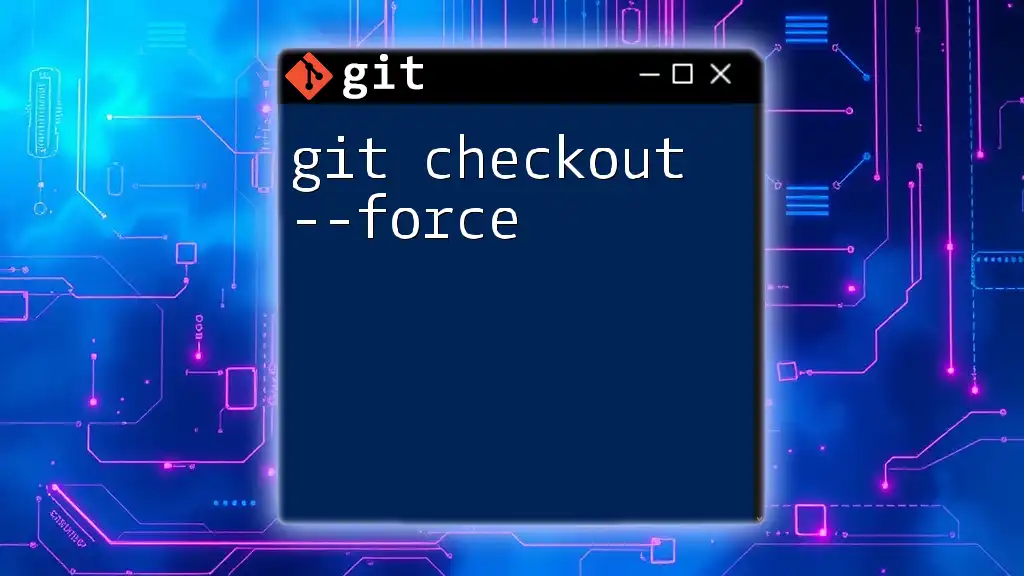
Conclusion
In summary, the `git checkout -1` command is an essential tool for any Git user looking to streamline their development process. Its capabilities allow for seamless navigation between branches, boosting efficiency and reducing cognitive load. Incorporating this command into your workflow can significantly enhance your Git usage.
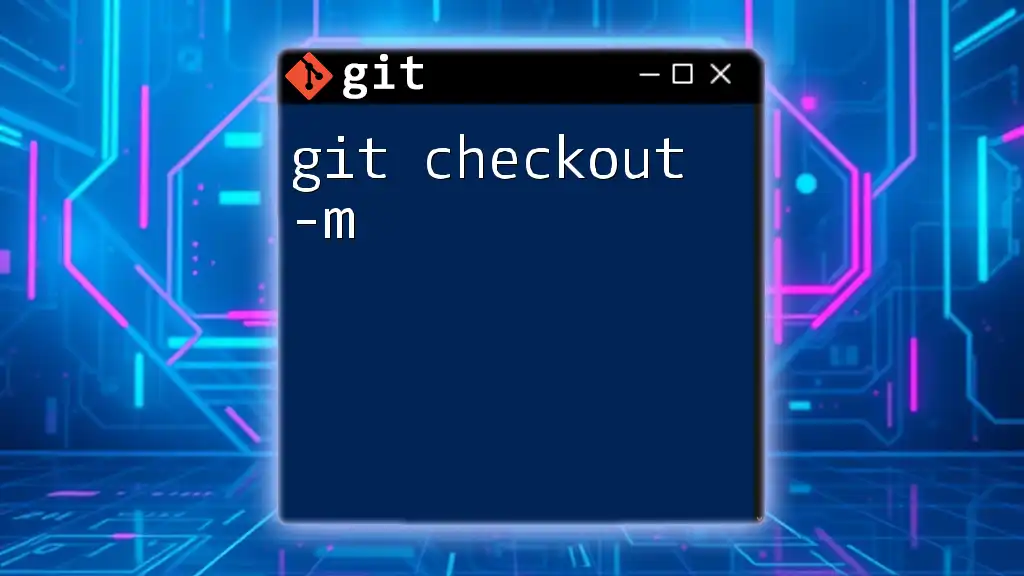
Additional Resources
Recommended Readings
For a deeper dive into Git commands, consult the official Git documentation about `checkout` and explore various tutorials that cover advanced Git usage.
Call to Action
Consider joining our mailing list if you want more tips on Git commands delivered directly to your inbox. We’d love to hear your experiences and questions regarding `git checkout -1`—let’s continue learning together!
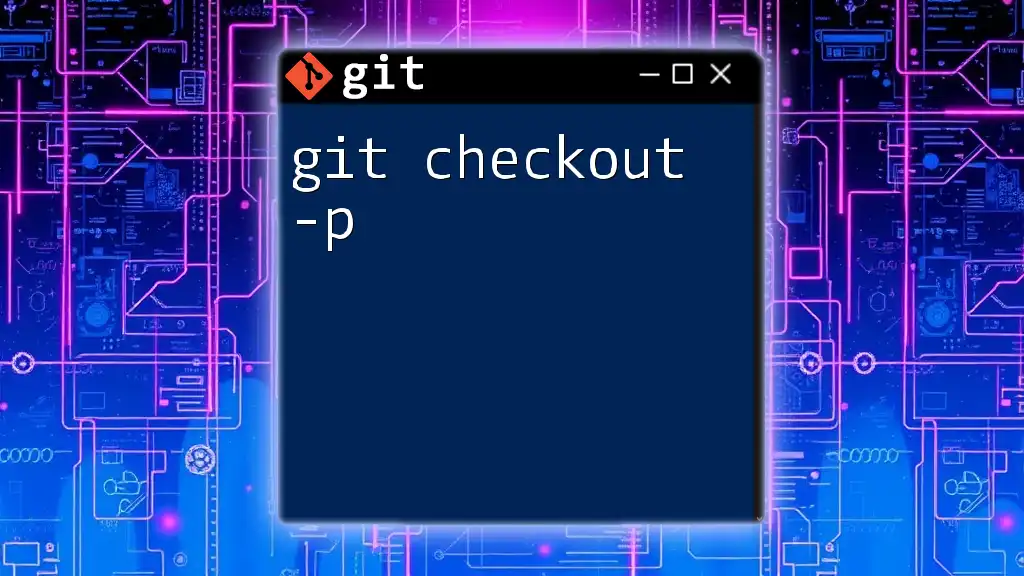
FAQ About `git checkout -1`
What happens if I run `git checkout -1` without prior branches?
If you attempt to run `git checkout -1` and have not switched from one branch to another, Git will produce a message indicating that there is no previous branch to return to. Therefore, ensure you have switched branches at least once before using this command.
Can I use `git checkout -1` if I have uncommitted changes?
While you can run `git checkout -1` with uncommitted changes, it’s best practice to resolve or stash those changes first. Switching branches can sometimes lead to conflicts, and having a clean working directory minimizes these issues.
Is `git checkout -1` deprecated or replaced by other commands?
As of the latest Git releases, `git checkout -1` has not been deprecated. However, in newer versions of Git, commands have been refined, and users are encouraged to use `git switch` for branch management. Still, `git checkout -1` serves as a valuable shorthand for those familiar with the command's function.

